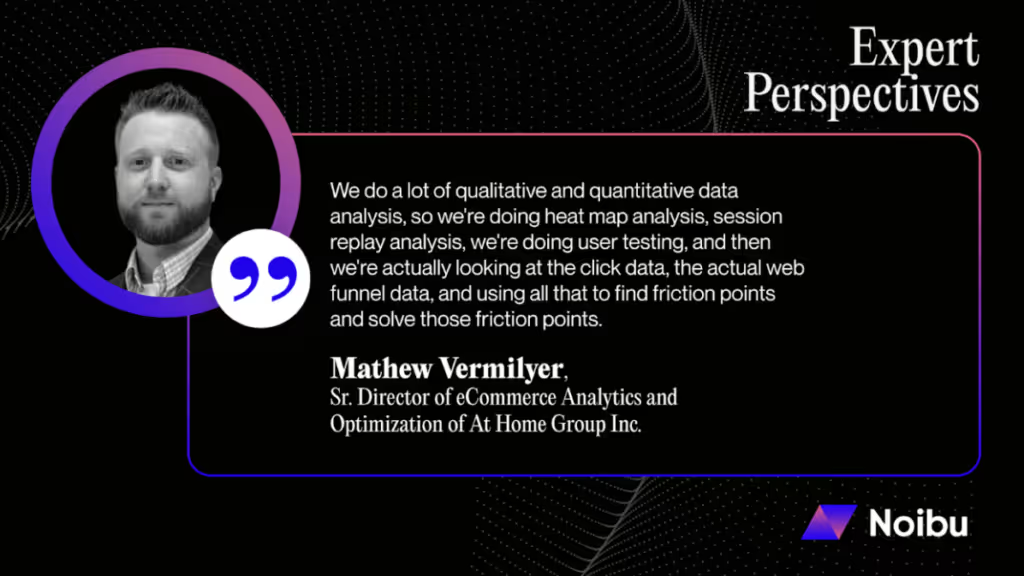Avoiding analysis paralysis when making data-driven decisions, with Mathew Vermilyer of At Home Group
.avif)
Have you ever wondered if you are using your data and analytics to the full potential?
After all, leveraging the right insights can completely change your conversion rates, and you could be missing out on some key business.
On the latest episode of The Ecommerce Toolbox: Expert Perspectives podcast, host Kailin Noivo is joined by Mathew Vermilyer, Senior Director of ecommerce Analytics and Optimization at the At Home Group. Together, they dig into data-driven decision making, including how to avoid analysis paralysis and how it can be used to increase conversion rates.
Blending qualitative and quantitative insights
Data is central to At Home Group’s culture. They frequently analyze both qualitative and quantitative data, including heat map analysis, session replay analysis, click data, and web funnel data, to find friction points in their customer’s experience, constantly making changes and repeating the analysis.

Often, qualitative and quantitative data tell completely different stories. After all, when you speak to customers, you can gain insights that are simply unavailable from analytics software, due to the wider contextual clues they discuss that influence their opinions and activity.
By relying on just one half of the data, you will miss friction points, there’s no two ways about it. These points could completely change your conversion rates. This is why At Home Group always uses both sets of data. That way they can get the full picture and then propose appropriate solutions that can then be trialed, tested, and implemented.
If there’s one thing we can learn from At Home Group, it’s that blending the two types of data is crucial for improving conversion rates.
Avoiding analysis paralysis when making data-driven decisions
Any regular analysis of data holds one big risk: analysis paralysis. This is where you get stuck in a loop of analyzing, falling into deep holes and never being able to make any decisions from your data.
To avoid this, you need to strike a balance between being data-driven and knowing when to step back.
To Mathew, this is the responsibility of leaders. They need to be decisive with their data and their approach. It is down to them to tell the rest of them when it’s time to step back, evaluate the current situation, and make the right decision.

Upcoming trends in ecommerce
Recently, there has been an increase in anomaly detection in analytics software such as Adobe Analytics. In fact, this is driving a lot of At Home Group’s current analysis. They dig into the anomalies flagged by the software and look at what the effects are and how they can resolve them.
To Mathew, the next step is for analytics software to cut out this second step, instead proposing a list of potential resolutions when anomalies are flagged. This will streamline the process for businesses, allowing them to just test the solutions and put them in place.
This is just one-way automation and AI will help in data-driven decisions.
Listen to the full episode below!
Tune in to this episode of The Ecommerce Toolbox: Expert Perspectives with Mathew Vermilyer to learn more about making data-driven decisions..
👉 Apple: https://apple.co/3IILoAU
👉 Spotify: https://spoti.fi/3TstQhu
Mathew Vermilyer is the Senior Director of ecommerce Analytics at At Home Group, a home and holiday superstore. Prior to this, he held a number of roles at PeakActivity, Office Depot, and OfficeMax, all of which helped to build him into the data and analytics leader he is today.


.avif)
.avif)
.png)